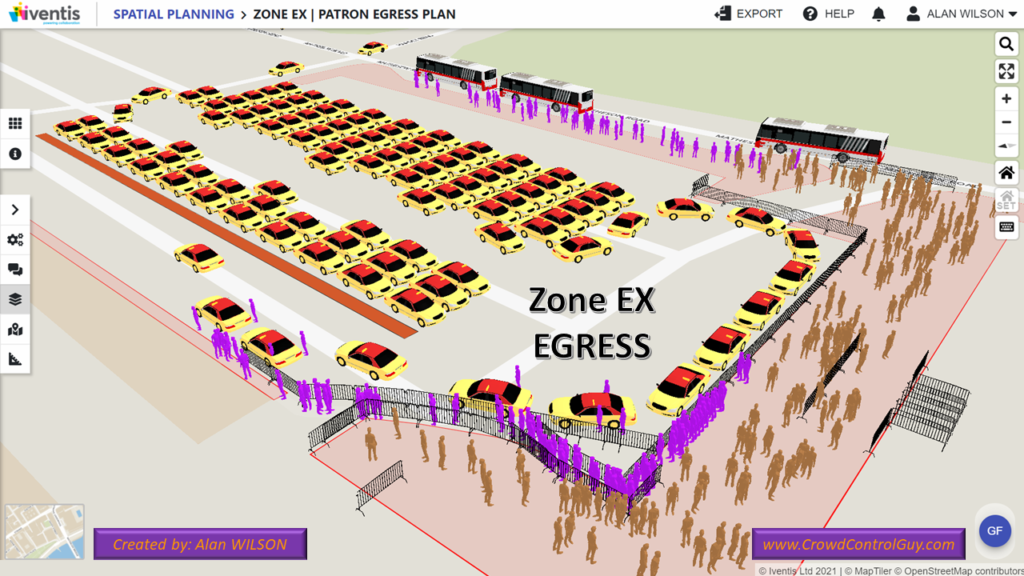Effective security planning is integral in the current climate. We are living in a world where large popular events and crowded locations are increasingly becoming targets for terrorism and other life threatening behaviour, therefore being prepared for the unthinkable is a necessity.
In November five people were killed and 40 injured when an SUV ploughed through a street full of dance troupes, marching bands and onlookers at a Christmas parade in Waukesha, Wisconsin. In the same month 10 people lost their lives as a crowd of 50,000 descended into chaos at the Astroworld music festival in Houston, Texas. These are just two examples of large events that suffered devastating consequences and, sadly, there are many more.
Putting together a security management plan is no mean feat for event organisers of large events, given the amount of things to consider. With health and safety risk assessment, measures to alleviate risks, an emergency plan, crowd management, parking plans, appropriate training and even food safety considerations to think about, the list is vast.
Security planning is all about figuring out where risks might occur and using a mapping platform can be an effective way to plan the security around a large event. Event mapping software provides an overview of the geography of a venue or site and help you identify those risks and mitigate them.
Being able to visualise and map the area around your event can help you pinpoint risks and areas of concern. Mapping platforms, like Iventis, also help you to collaborate with multiple agencies leaving no grey areas when it comes to security risks. Large event organisers from the likes of Dubai Expo 2020 and COP26have used Iventis to plan the security around the event. We’ve listed below some important things to consider when putting together your event security management plan and how a mapping platform can help.

Collaboration
Planning large, complex events requires a large team to work together and with ever changing plans it’s imperative that organisers and outside agencies such as the emergency services or private security firms work together to plan every aspect in one place. Using spreadsheets, presentations and documents that keep data in silos can result in lost information leading to unforeseen potential issues and grey areas. Every stakeholder needs a clear, common understanding of the latest event plans. When it comes to security, there is no room for error and having a single view of the entire event can ensure everyone is on the same page from the Police to local authorities.
Infrastructure
Utilising infrastructure and understanding how it can be used to keep eventgoers safe is another important part of putting together a security management plan. Secure perimeters, entry points, exit points and vulnerable spaces are key aspects to consider. For parades and large street events, perimeter fencing, barrier fencing and even natural barriers, can all be extremely effective safety tools. Equally, the environment can present vulnerabilities and opportunities for attackers. CCTV needs to be used, alongside security personnel, to monitor these spaces. With a rise in the amount of hostile vehicle attacks, hostile vehicle litigation may also be necessary. Mapping tools can be incredibly effective for analysing, measuring, interrogating and understanding the infrastructure around your event and how it can be used effectively.
Transport
The transport and logistics element of any event is key to its safety and success, events with a large public following or ticketed attendance, in particular, require detailed analysis and overview of the safe and efficient movement of people. It’s important to understand the ever changing situation that can occur when delivering an event that requires multiple transport modes. Visualising and understanding what’s happening by the minute, then sharing that information with all parties if required and with the public is also a key factor.
Staff, screening areas and checkpoints
It’s important to consider and plan for the ebbs and flows of people in and around the venue. Screening areas, check points and access permissions are vital for security staff to do their job effectively by moving people in and out and checking they aren’t carrying anything illegal or dangerous. Conversely, the queues associated with pedestrian screening can themselves present a vulnerability. Mapping tools are great for planning the layout of pedestrian screening areas, queues, vehicle permit areas and checkpoints. Furthermore the planning of staff and barriers positioned in the correct areas, which is another key part of the security plan.
The security of an event doesn’t stop at the venue perimeter. Within a venue, different spaces need to be protected through access control measures and accreditation. These spaces can be planned and mapped out with software like Iventis.
These are just four of a multitude of things to consider when putting together security management plans for large, complex events and how mapping platforms can help. We are living in unprecedented times where safety and security are incredibly high on the agenda and security management plans are integral to the safety and security of eventgoers. With the right tools and smart methods of working, an effective and manageable plan can be a reality and often the most productive, collaborative and cost effective way of operating.
Joe Cusdin, CEO and Founder of Iventis












